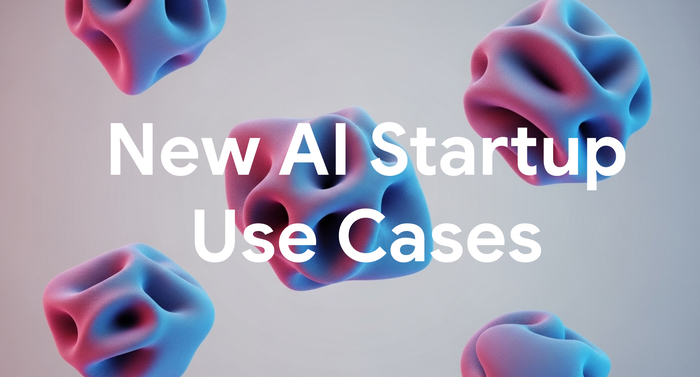FLYR Labs applies AI and machine learning to help airlines reach new heights
Gabriel Underwood
VP, Engineering, FLYR Labs
Try Google Cloud
Start building on Google Cloud with $300 in free credits and 20+ always free products.
Free trialThe global pandemic created additional challenges in our already complex, competitive industry and resulted in an estimated $370B in lost airline revenues. It’s well known that airlines need to fill as many seats as possible—at the best possible fares—to maximize revenue. Yet with so many variables impacting flights and travelers today enjoying more options than ever, uncovering the magic mix of price, availability, and desirability can be elusive.
That’s why we launched FLYR Labs. While there are a lot of airline revenue management solutions out there, we’re betting big on big data, comprehensive analytics, AI, and machine learning to transform how airlines fill planes, grow revenue, and make more intelligent decisions across commercial teams.
The Startup Program by Google Cloud, which we joined when we founded FLYR Labs, and Google Cloud solutions have been instrumental in our rapid success, connecting our team with the tools, processes, relationships, and best practices to build our business.
The amount of computing power required to transform how airlines approach revenue operations limits the technologies we can deploy. When we started, we considered all the options. Google Cloud stood out, addressing our need for a proven global cloud provider that could process terabytes of data and deliver insights in real-time to address constantly changing market conditions.
Navigating demand and pricing
Currently, most airlines work on historical models that attempt to forecast demand and price flights far into the future. But those forecasts fail to address the reality that airlines must continually reprice flights to stimulate demand and compete more effectively.
With so many factors influencing people’s travel decisions—time of year, time of day, desired destinations, comfort, and many others—airlines face the challenge of managing terabytes of data daily. For example, when airlines try to reprice flights using legacy revenue management solutions, it typically takes several hours, which means airlines can only reprice seats on flights at best a couple of times every day.
In addition, legacy revenue management architectures were designed for on-prem deployment in airline data centers. They come with all the costs and challenges inherent in managing large on-premises enterprise systems. They also can’t scale to support the dynamic conditions facing airlines today. This means dealing with increasing volumes of complex data isn’t possible, often leaving airlines to treat all flights departing on the same date as a single product, whether it’s a 6:00 a.m. flight for business travelers or a later flight desired by holiday travelers.
Machine learning enables differentiation
At FLYR Labs, one of our differentiators is bringing machine learning into airline pricing. We worked closely with Google Cloud to create a cloud-based and easy-to-navigate user interface tool. Our Cirrus Revenue Operating SystemTM enables airlines to see a much clearer picture of anticipated forecast demand over time. This ultra-accurate forecasting enabled by our system allows, commercial airline decision-makers to make more intelligent decisions that drive significant business results.
Built on a comprehensive data model that integrates all commercial data, Cirrus continuously identifies similarities across airports, routes, flights, departure times, and more. Its neural network architecture creates highly accurate forecasts for months before flight departure.
Using Google Cloud, we can reprice an airline’s full schedule of thousands of flights per day and for all departures a year into the future. This gives us more accurate revenue forecasts and more optimal pricing to drive our customers’ revenues. We’ve already seen tremendous results at the many airlines we serve, including up to a 7% lift in revenue, a 4% increase in passenger loads, and a 10x reduction in forecast errors.
No two flights or customers are the same
Of course, it takes a lot of data to determine the best price for the variety of seats on an airplane. We use BigQuery as our data warehouse. We take as much data as we can get, usually seeking about three years of historical airline data from our customers, regardless of source or format. We set up ongoing pipelines to bring in schedule changes and active bookings. We train our product machine learning models against each airline's data since every airline has different geographies it serves, unique customer behaviors, and business models.
We have built data quality checks that can vet all incoming data in a few minutes at the beginning of the day and immediately identify any data problems, saving ourselves and customers hours in escalations. The result is that our customers have reliable, accurate data to make quick, informed business decisions.
Using Google Cloud AI platform tools, we can build, deploy, and scale ML models. Dataflow fully managed data processing service lets us capture, process, and analyze data efficiently and rapidly. We also spend less time managing operations pipelines and can focus more resources on developing new features for airlines.
At this point, all our product and tooling business logic is either in Google Cloud Dataflow or in Google Kubernetes Engine, our managed environment for deploying, managing, and scaling containerized applications in Google Cloud. We have microservices, the web UI, API integrations, and Apache Airflow jobs running in Kubernetes.
Our data science team uses TensorFlow open-source machine learning platform and Colab from Google Research extensively. If you’re not familiar with Colab, check it out. It’s free, well suited to machine learning, and you can write and execute Python code that runs in the browser using Google Cloud.
Currently, we use internal Tableau dashboards, and we take advantage of Google Data Studio to turn data into insightful, customizable reports and dashboards. We've also built several customer-facing dashboards in our web application. Powered by Cloud SQL, our Cirrus revenue management application gives airline analysts a lot of flexibility in viewing performance metrics and other aspects of their business. The underlying database performance would be very difficult to provide without the fully managed Cloud SQL service.
Using data to solve transportation challenges
We recognize that our toolset to solve forecasting and pricing challenges can improve many functions at airlines. For example, marketing teams can use our environment to decide where to spend budget to stimulate demand, scheduling and planning teams can decide which aircraft to put on each route, and executives can gain insights daily to inform top business priorities.
Today, we’re focused on airlines, but we also see more opportunities ahead. We can take our success at airlines and help the broader travel and transportation industry. We can leverage vast amounts of data to automate decision-making about rental cars, hotel rooms, cruise ship cabins, and rail seats. We can even go beyond the transportation industry to entertainment as organizers look to sell tickets to concerts, plays, and other activities.
A true testament to the power of our solutions—which also underscores the power of Google Cloud—is that when we enter a deal with airlines, and we only charge if we achieve results above what they see today. Our business model speaks to our confidence in the solutions we’ve built and the technology supporting it. If you’d like to hear more about FLYR Labs, check out this video interview with our founder and CEO Alex Mans.
If you want to learn more about how Google Cloud can help your startup, visit our page here to get more information about our program, and sign up for our communications to get a look at our community activities, digital events, special offers, and more.



